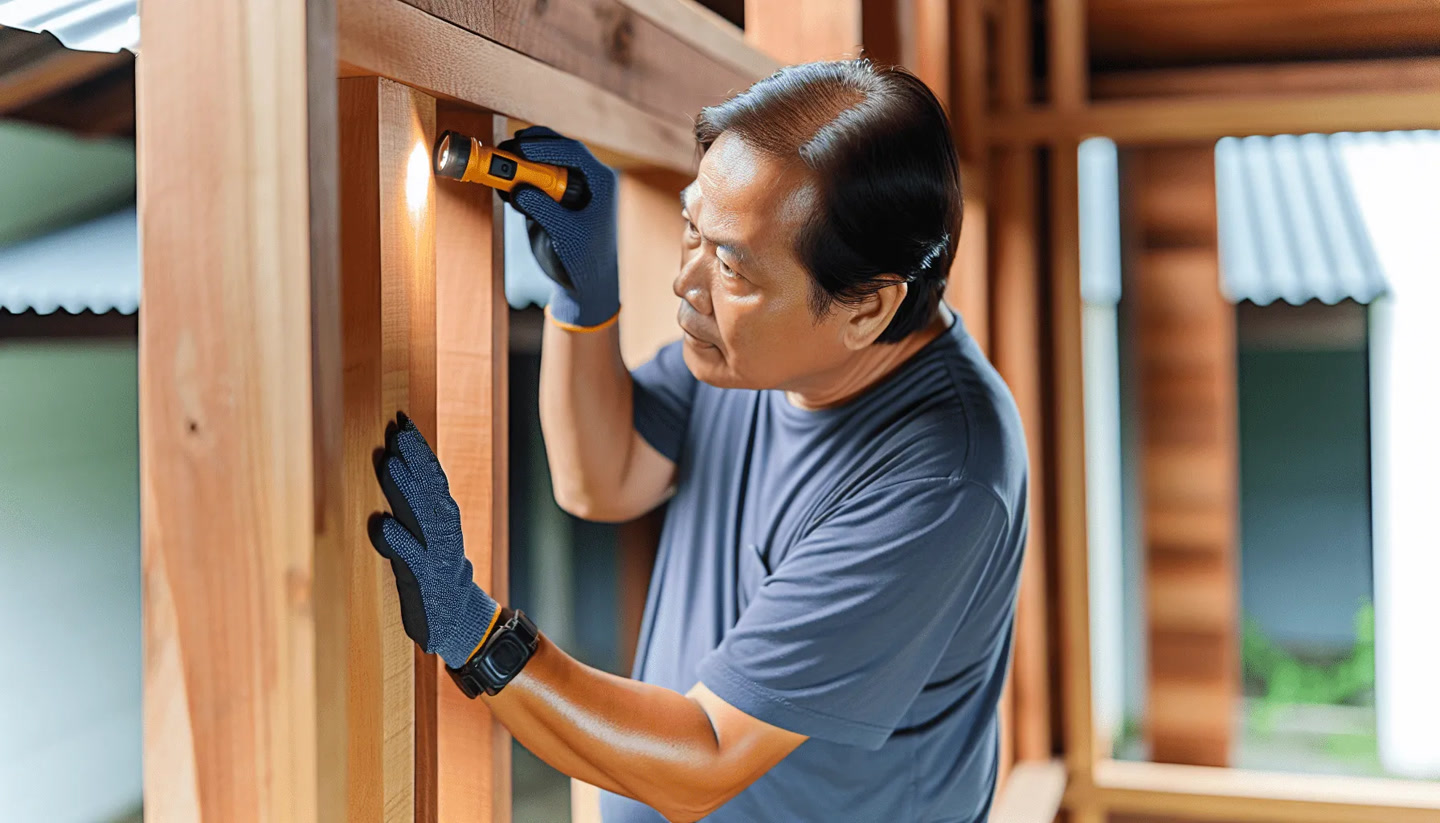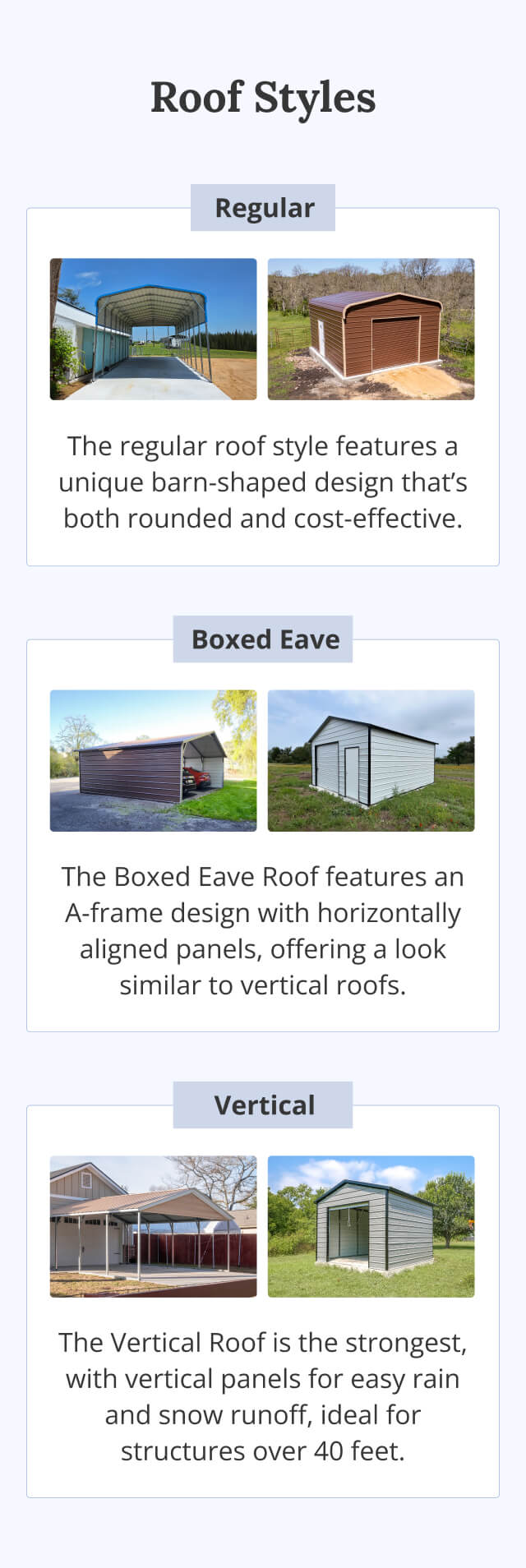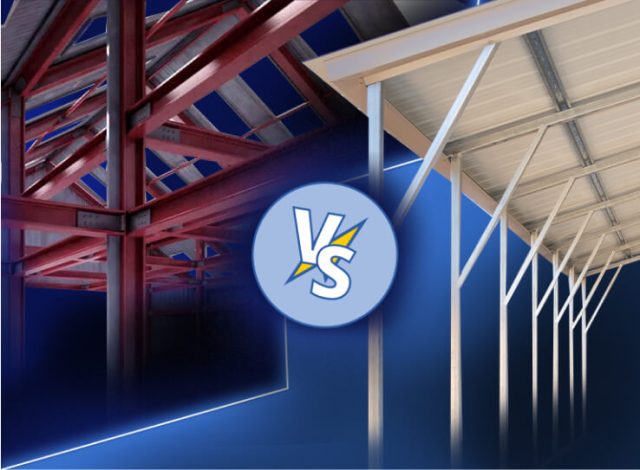Choosing the right building for your needs can be challenging. The construction industry offers many building material options, each with pros and cons. Two popular choices are red iron and steel.
But what is the difference between the two? And how do you choose the best option for your building project?
This post will help you decide if a steel or red iron building suits you. We’ll look at the key differences, including the materials and building process involved, how long they last, and how to care for them. We’ll also discuss the most common uses, how much they cost, and ways to customize them.
What is Red Iron?
Many folks think red iron and steel are the same, but that’s not quite right. Red iron is a type of industrial-grade steel with a special iron oxide coating that gives it a distinctive red color. This prime coat helps wick water from the surface, giving some rust protection. It also adds a rough surface for other paints to really grab onto.
So, at its core, red iron isn’t really iron. It’s steel with a special coating.
Red iron usually comes in I-beams and H-beam profiles. These shapes give the steel exceptional structural strength and allow it to hold heavy loads, making it perfect for building strong iron structures.

The Red Iron Oxide Coating
The red color of red iron comes from a special coating made of a red-tinted iron oxide. This coating is made by heating iron oxide with carbon and silicon. It helps protect steel from rust and makes it last longer. But it’s important to know that red iron can still rust over time, even with this coating.
What is a Red Iron Building?
Simply put, a red iron building is any beam building made with red iron. You can easily recognize these buildings by their rust-colored red metal beams. Since red iron is steel at its core, you could also call them red iron steel buildings, but it’s not as common.
Red Iron Vs. Steel
Now, let’s talk about steel.
According to the American Iron and Steel Institute (AISI), the United States produced 94.7 million tons of raw steel in 2022, including the steel used in red iron.
Steel is any mix of iron and other elements like carbon and manganese. You can use it in all sorts of things, from cars to bridges.
Tubular Steel in the Construction Industry
The most common type of steel used in the metal building industry today is tubular steel. These hollow steel tubes are very strong and lightweight. Grand View Research puts the market for steel tubes at a whopping $105.3 billion, representing 90% of the total American steel market.
So, when someone talks about “steel construction” or “steel buildings” today, they usually mean tubular steel.
Composition of Red Iron Vs. Steel
So, how does tubular steel compare to red iron?
The cores of red iron and steel are basically the same: industrial-grade, high-quality steel. This steel comes in different combinations of materials, such as the following:
| Element | Percentage |
|---|---|
| Iron | 95–99% |
| Carbon | 0.12–2.0% |
| Manganese | 0.25–2.0% |
| Silicon | 0.10–3.0% |
| Other elements | Trace amounts |
Depending on the composition, you can get steel beams with exceptional strength to support heavy machinery or lighter beams with incredible flexibility to support roof panels.
What sets red iron apart is the red coating.
Advantages and Disadvantages of Red Iron and Steel Buildings
Here’s a quick comparison of steel and red iron buildings’ pros and cons:
| Type of Building | Pros | Cons |
|---|---|---|
| Red Iron | Strong, durable, can handle heavy loads, good for large, open spaces, easy to assemble, and can be customized. | It can be more expensive than steel buildings and may require more maintenance in harsh environments. |
| Steel | It is lightweight, versatile, cost-effective, resistant to pests and fire, easy to maintain, and good for DIY projects. | It is not as strong as red iron, may not be suitable for very large buildings or those with heavy load requirements, and can be dented or damaged more easily. |
Red iron buildings are known for their strength and load-bearing capacity. They’re better at handling harsh weather conditions and are perfect for large, open spaces. They’re also easy to put together. In fact, you can buy them as pre-engineered red iron building kits.
If you live where local regulations have stringent snow-load requirements, a red iron building is probably your best bet.
Steel buildings are lightweight and come in many styles. They’re also available in steel building kits, which are more budget-friendly, easy to care for, and great for DIY projects. That said, they might not meet some local building codes for certain applications.
Maintenance and Durability: Red Iron vs. Steel Buildings
All buildings need maintenance, but red iron buildings usually need more than steel buildings. Here’s why:
Maintaining Red Iron Buildings
Red iron buildings are tough, but they need a little TLC now and then:
- Regular inspections: Red iron buildings benefit from regular check-ups to look for signs of wear and tear, such as rust, damage, or loose components.
- Regular cleaning: They require measures to prevent and treat rust, including cleaning affected areas.
- Fastener maintenance: You must check and tighten bolts and screws periodically and replace any damaged or corroded fasteners.
- Protective coatings: You must add a protective coating to your red iron building regularly.
Maintaining Steel Buildings
Steel buildings are pretty low-maintenance and are more resistant to rust, but here are a few things to keep in mind:
- They also require regular cleaning.
- They also benefit from regular checks for damage.
- They may also need a regular touch-up here and there.
Applications of Red Iron and Steel Buildings
Red iron and steel buildings are like chameleons – you can use them for all sorts of things.
Common Uses of Red Iron Buildings
| Industry | Examples |
|---|---|
| Agricultural structures | Barns, storage sheds, equipment shelters, greenhouses, livestock housing. |
| Commercial buildings | Large retail stores, office buildings, warehouses, and community spaces. |
| Industrial buildings | Manufacturing plants, factories, workshops, distribution centers. |
| Residential constructions | Garages, workshops, sheds, guest houses. |
Common Uses of Steel Buildings
| Industry | Examples |
|---|---|
| Commercial buildings | Small retail stores, restaurants, and office buildings. |
| Industrial buildings | Small-medium warehouses, workshops, and manufacturing facilities. |
| Residential constructions | Pedestrian bridges, bus stops, train stations, utility buildings. |
Cost Comparison Between Red Iron and Steel Buildings
When it comes to cost, there’s no one-size-fits-all answer. Metal buildings are more expensive upfront than wooden structures made with traditional construction methods. However, wooden structures don’t last as long and require lots of upkeep, so they’re more expensive in the long run.

Things get a little trickier when comparing red iron to steel. Both depend on the current price of steel, the building options, and the customization you need. Construction costs can also vary greatly based on the building style, location, and any special features you want.
That said, red iron buildings are typically more expensive than structural steel buildings. A red Iron building might cost around $20 to $40 per square foot, while a steel tube building can range from $15 to $30 per square foot.
Keep in mind that these are just rough estimates. A pre-engineered metal building can be mass-produced and can be significantly cheaper than a custom build.
But why are red iron buildings more expensive than steel?
- Red iron is typically made with thicker steel, which is more expensive per foot than steel tubes.
- Being thicker also makes red iron heavier than steel tubes, making transportation more expensive. Also, they often require more specialized labor to assemble, which can increase construction costs.
- The added weight, especially for larger buildings, may require stronger, more costly concrete foundations.
- Red iron buildings may also require more complex engineering and design work to withstand seismic loads, snow, and winds, adding to the overall cost.
Besides a higher initial cost, red iron buildings are also more expensive to maintain, as mentioned above.
Customization Options for Red Iron and Steel Buildings
One of the things that makes red iron and steel buildings a popular choice is that you can customize them to fit your needs and style.
- Roof Styles: You can choose from different roof styles, such as regular, boxed eve, and vertical designs.

- Wall Panels: There are many options for wall panels, from basic metal walls with or without insulation to more decorative choices.
- Design Flexibility: You can customize the design within certain limits by adding doors, windows, overhands, awnings, a second floor, and more.
- Expandable End Walls: Need more space down the road? No problem! You can add on to your red iron building with expandable end walls.
- Framing Options: For your primary framing, you can choose different framing options, like bolt-up or weld-up metal framing.
Making a Choice: Red Iron or Steel?
Whether you go for red iron or steel depends on what you need the building for, your budget, and what you like. Larger clear-span structures typically require red iron frames. You can build smaller structures with steel tubing.
Both are great choices for durable, long-lasting structures that will make you a happy metal building owner. Need help deciding on one? Check out our metal carports available in various sizes and styles.
FAQs
Got questions? We’ve got answers!
Is red iron stronger than steel?
Yes. Red iron is a type of steel, but it’s usually stronger than tubular steel because it comes in thicker, stronger beam profiles like I-beams and H-beams.
Which type of building is more cost-effective?
Steel-framed buildings are typically cheaper to build and maintain than red iron buildings. However, red iron building kits can also be very cost-effective.
What is the difference between red iron buildings and pre-engineered steel buildings?
Red iron buildings specifically use steel I-beams or H-beams made from red-tinted steel. Pre-engineered steel buildings are a broader term that also encompasses metal building structures made with other types of steel, like tubular steel.




